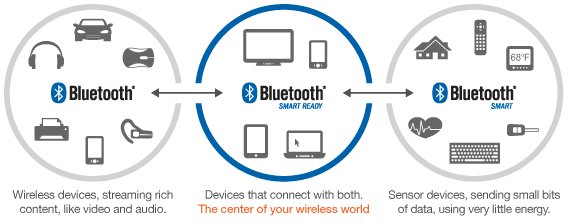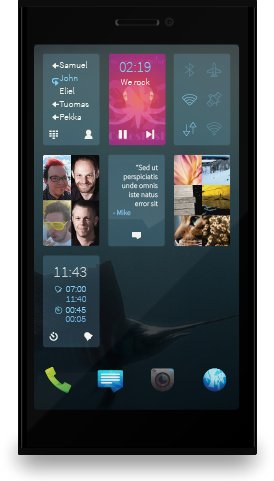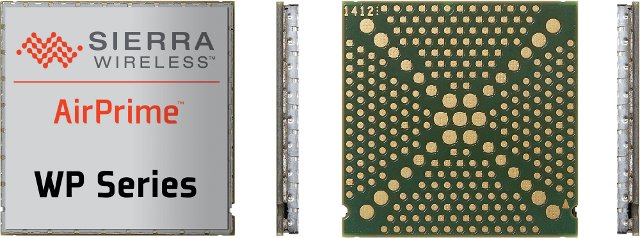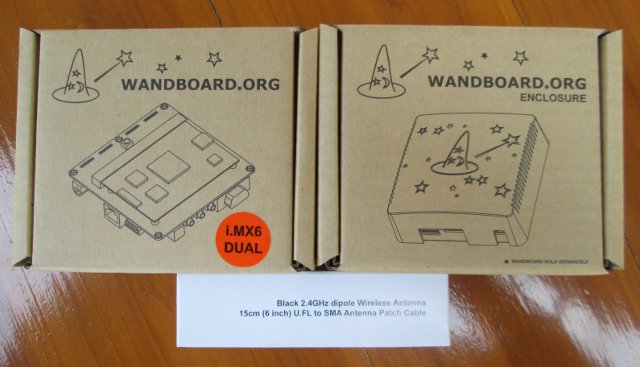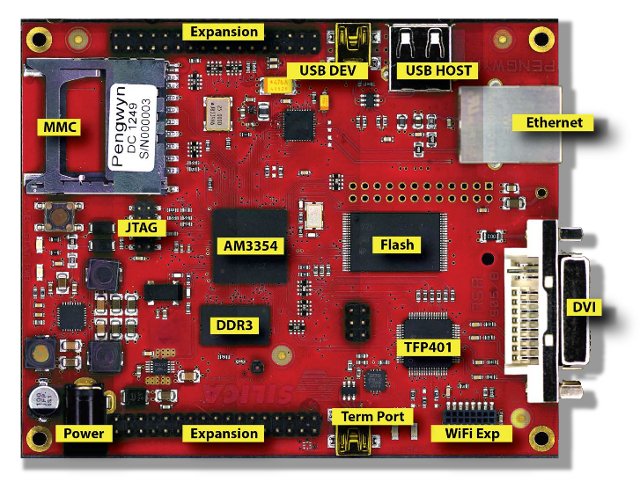I’ve seen more and more Bluetooth 4.0 LE devices in the last few months including RFDuino, Wimoto Motes, TI SensorTag, and Scadanu Scout, so I thought it would be good to write a bit about Bluetooth. First, I’ll write about the different version of Bluetooth, since I was still confused with the practical implications between the versions, and then I’ll show some development kits and software resources to play around and/or develop Bluetooth 4.0 LE applications both on devices and hosts. Bluetooth Versions Bluetooth v1.0 and v1.0B The Bluetooth 1.0 Specification was released in 1999, and according to an entry in Wikipedia, 1.0 and 1.0B devices had many issues, mainly interoperability issues. You won’t find any Bluetooth 1.0 device today. Bluetooth v1.1 Bluetooth v1.1 was ratified as IEEE Standard 802.15.1-2002 in 2002. It fixed many issues found in the previous specifications, added the option to use non-encrypted channels, as well […]
Bsquare Announces Qualcomm Snapdragon 800 Series Mobile Development Platforms
BSQUARE has recently announced the availability of its Qualcomm Snapdragon 800 Mobile Development Platform (MDP), based on Qualcomm Snapdragon 8974 (LTE), which will be released both in tablet and smartphone form factor. This development platfom has been designed for application developers and device manufacturers so that they can develop, test, optimize and showcase apps in Android 4.2.2 powered by the latest Qualcomm SoCs. Snapdragon 800 Tablet and Smartphone MDP specifications: SoC – 8974 Quad Core Krait 400 Snapdragon Processor @ 2.3GHz with Adreno 330 embedded GPU and Hexagon v5 QDSP6 Memory and Storage – N/A, apparently you don’t need to know… Display: Tablet MDP – 11.6” 1080p HD Multitouch Display Smartphone MDP – 4.3” 720p HD Multi-touch display Video Playback – UltraHD/4K video support via HDMI output Camera – 12MP rear camera w/ Flash (1080p HD @ 30fps) & 2MP front facing camera (1080p HD @ 30fps) Audio – Surround sound […]
Sailfish OS SDK Adds Support for Windows and Mac OS X
At the end of February, Sailfish OS SDK Alpha was released with support Linux 32- and 64-bit only. The latest version of Sailish OS SDK can also be installed in Windows and Mac OS X. If you’re developing in Linux, it’s just the same SDK as released in February. The SDK and quick start guide is available from Sailfishos.org, or you can click directly on the links before to download and install the SDK. Windows SDK installer – SailfishOSSDK-windows-offline.exe Mac OS X installer – SailfishOSSDK-mac-offline.dmg The SDK is still at the Alpha stage with several known issues, and probably a few more yet-to-be-known bugs. Jean-Luc Aufranc (CNXSoft)Jean-Luc started CNX Software in 2010 as a part-time endeavor, before quitting his job as a software engineering manager, and starting to write daily news, and reviews full time later in 2011. www.cnx-software.com
Sierra Wireless Airprime WP & AR Series Modules Feature Tricore M2M SoC
Sierra Wireless, a company providing machine-to-machine (M2M) solutions, has recently introduced a new (nameless) architecture for embedded wireless communications comprised of a multicore (again, nameless) “high speed application processor” + Cortex M0 MCU + Radio SoC, secure cloud services (AirVantage) to store the data, and an open application framework with M2M libraries and development tools. This new architecture will be available in the company’s AirPrime WP & AR Series wireless modules to provide 2G to 4G technologies for the Internet of things. WP Series are industrial grade modules to be embedded into applications such as smart metering, remote monitoring, transportation, security systems, networking, and healthcare, whereas AR series will be used for automotive applications. The 2G versions will feature an M2M system-on-a-chip with a advanced tri-core architecture that includes a 2G EDGE modem, a Cortex A5 ARM application processor, and an ARM Cortex-M0 processor to enable ultra-low power operation. The […]
Sailfish OS SDK Alpha Release Is Now Available for Linux
Sailfish OS is a new mobile operating system based on the Qt platform that will soon end-up in mobile phone near you. Until now it was possible to build the SDK yourself, but it was pretty challenging since the documentation was lacking, as Jolla, the company behind Sailfish OS, focused on development. The good news is that you don’t need to build the SDK yourself anymore, since Jolla has just released Sailfish SDK Alpha for Linux 32-bit & 64-bit, and Windows & Mac OS versions will come later. You’ll need a computer that meet the following requirements: A host machine running a Linux operating system Oracle’s VirtualBox version 4.1.18 or higher pre-installed on the host machine. About 5GB of free disk space 4GB of RAM or more is recommended You can get started in two steps: Install the SDK – Download the 32 bit or 64 bit Linux installer. (~650 […]
Wandboard Dual Unboxing and Quick Start Guide
I’ve just received Wanboard Dual development board together with an enclosure, and Wi-Fi antenna. This board is powered by Freescale i.MX6 Duallite Cortex A9 processor, and comes with 1GB RAM, HDMI output and Ethernet. There’s also a version based on Freescale i.MX6 Solo with 512 MB RAM. You can refer to my earlier post for more detailed specifications. I’ll start by showing some unboxing pictures of the board, and write a quick start guide (casing assembly, Ubuntu & Android boot, and development). I also planned to run some benchmarks and test videos, as according to a poll on Wandboard website many people want to use it as a media player, but I’ll do that a bit later since the current Android image is not up to the task yet. Wandboard Dual Unboxing The package I received contained 3 boxes: one for Wandboard Dual board, one for the enclosure, and one for […]
SILICA Pengwyn Low Cost Open Industrial Development Platform Powered by Sitara AM3354 Processor
At the end of January, SILICA, an Avnet subsidiary, announced the Pengwyn, a single board computer based on Texas Instruments Sitara AM3354 Cortex A8 processor. The board targets industrial customers, and the company promotes it as “an open platform to develop applications under Linux or Windows Embedded operating systems”. Here are the specifications of the Pengwyn board: Texas Instruments Sitara AM 3354 ARM Cortex-A8 MCU @ 720 MHz System Memory – 256 MB DDR3 Storage – 1 GB Nand Flash, 32 MB SPI Flash Memory, and microSD slot (if not used with Wi-Fi/Bt modules) Connectivity and expandability USB Host and Device Ports RJ-45 Ethernet Port Connector for optional 1 GB Ethernet Port 2x connectors for generic expansions modules SDIO/MMC Port (can be used for optional WI-FI/bluetooth modules) DVI Display Port Silica will provide Linux (Arago Project, an OpenEmbedded based Distribution) and Windows Embedded Compact 7 BSP and images, as well as […]
Tizen 2.0 SDK and Source Code (Magnolia) Release
Tizen developers have just announced Tizen 2.0 source code and SDK release. This release includes many new features and improvements over Tizen 1.0 released in April. The highlights of this release include: Enhanced Web framework that provides state-of-the-art HTML5/W3C API support Web UI framework, including full-screen and multi-window support Additional Tizen device APIs, such as Bluetooth and NFC support, and access to the device’s calendar, call history, and messaging subsystems Web Runtime framework supporting new configuration elements for specifying the required features and privileges, and providing the basic runtime environment for NPRuntime plugins Native framework supporting full-featured application development and providing a variety of features such as background applications, IP Push, and TTS (Text-To-Speech) Core and native reference applications including Calendar, Contacts, Gallery, Phone, Settings, and Video Player Enhanced Web IDE providing WYSIWYG design environment, Chrome-based JavaScript inspector, and JavaScript log viewer Native IDE providing a project wizard, WYSIWYG design […]


